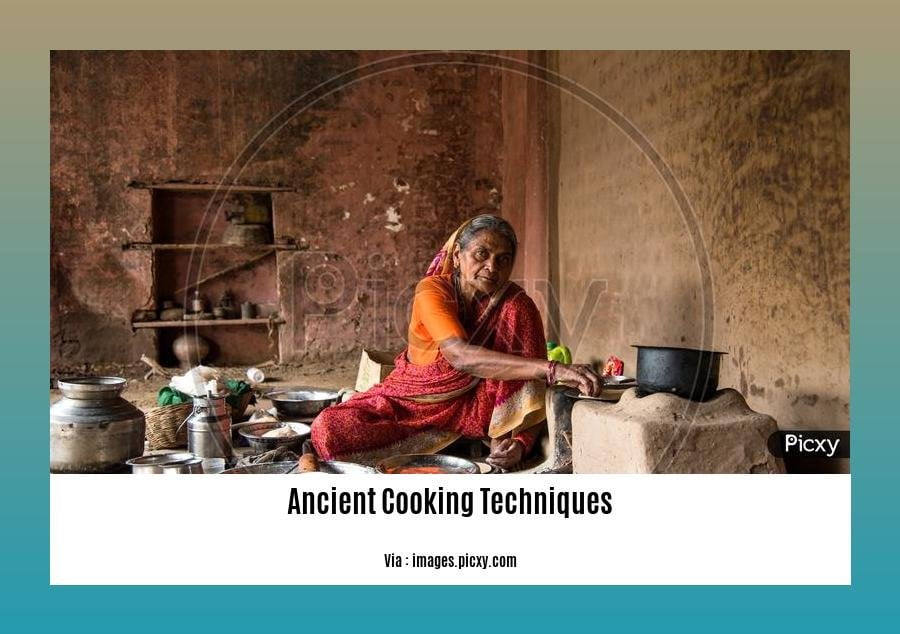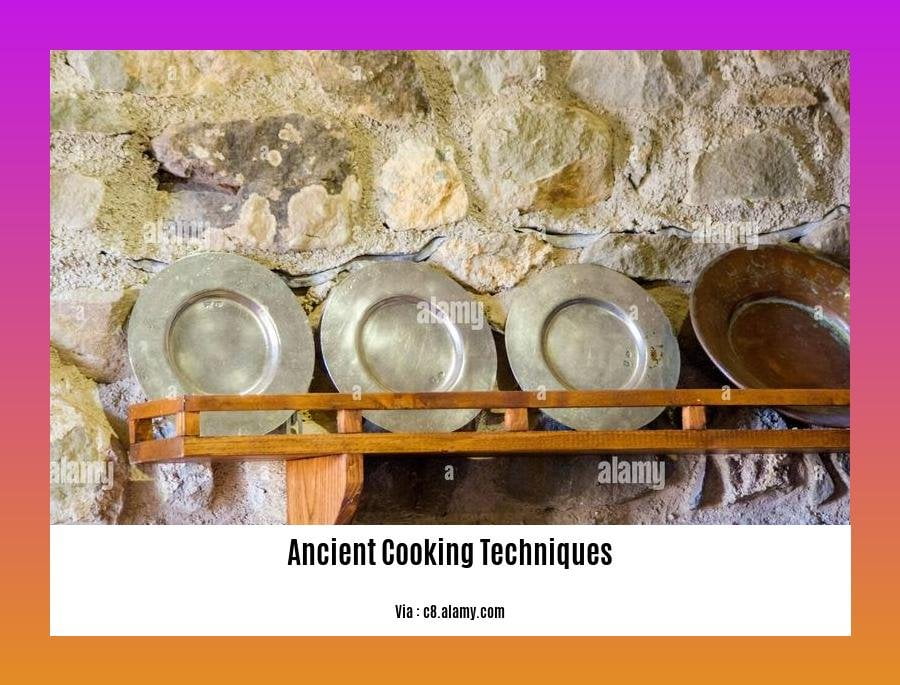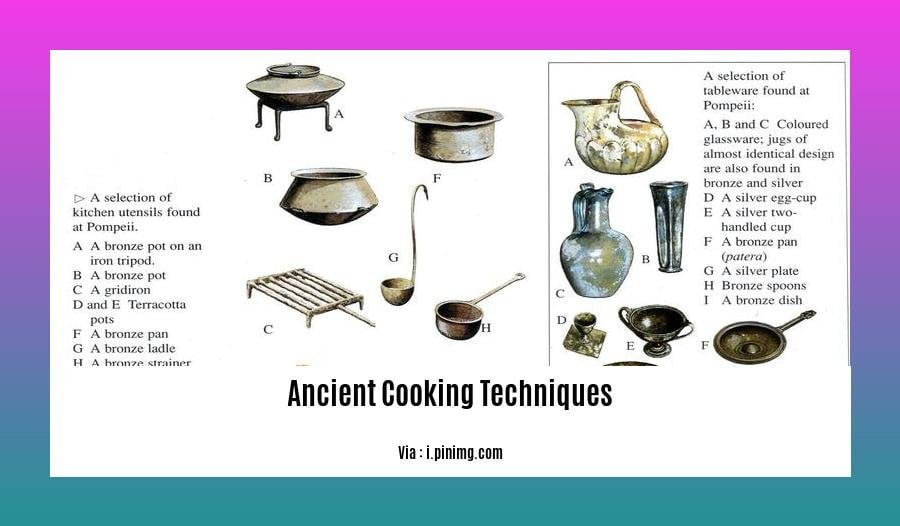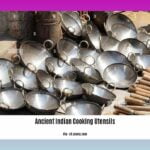Join us on a captivating journey through time as we delve into the secrets of ancient cooking techniques with a culinary historian’s expert guidance. Through [- Unveiling the Secrets of Ancient Cooking Techniques: A Culinary Historian’s Exploration], we’ll embark on a culinary expedition to uncover the fascinating world of traditional cooking methods that shaped the history of cuisine.
Key Takeaways:
-
Ancient cooking techniques provide a fascinating glimpse into the culinary traditions of our ancestors.
-
Clay pot cooking, dating back 20,000 years, utilizes heat-resistant earthenware to impart distinct flavors and preserve natural juices.
-
Spit roasting, an ancient method, involves skewering meat and slowly rotating it over an open fire, resulting in succulent and flavorful dishes.
-
These techniques offer a unique culinary experience, connecting us to our culinary history.
-
Further exploration of ancient cooking methods can shed light on the evolution of cuisine and deepen our appreciation for diverse culinary traditions.
Ancient Cooking Techniques

From the ashes of ancient hearths to the modern kitchens of today, cooking techniques have evolved over millennia, shaping the culinary traditions of civilizations. Embark on a delectable journey as we explore some of the most remarkable ancient cooking techniques that have stood the test of time.
The Art of Clay Pot Cooking: Earthenware’s Culinary Embrace
In the realm of ancient cooking techniques, clay pot cooking emerges as a timeless art form. Clay’s inherent heat resistance has allowed civilizations across the globe to harness its power for culinary creations. This age-old method infuses dishes with a symphony of flavors, preserving their natural juices while evenly distributing heat. Clay pots have become the vessels of choice for stews, soups, and slow-cooked meals, resulting in tender and succulent masterpieces.
Spit Roasting: A Culinary Dance Over Open Flames
Spit roasting, a technique as old as time itself, involves skewering meat onto a rod and slowly rotating it over an open fire or heat source. This rhythmic dance of meat and flame ensures even cooking, allowing the meat to self-baste in its own juices. The result? Succulent and savory dishes that delight the palate. Spit roasting has become synonymous with whole animals, poultry, and large cuts of meat, tantalizing taste buds with its smoky aromas and tender textures.
The Mastery of Fermentation: Preserving Flavors Through Time
Fermentation, an ancient technique that harnesses the power of microorganisms, has played a pivotal role in preserving food and creating unique flavors. This process involves the conversion of sugars into acids, alcohol, or gases, leading to a captivating array of fermented foods. From tangy sauerkraut and zesty kimchi to the intoxicating aromas of wine and beer, fermentation has transformed culinary landscapes across cultures.
Unveiling the Secrets of Ancient Breadmaking: Unleavened Delights
In the annals of ancient cooking techniques, unleavened bread holds a prominent place. This bread, devoid of leavening agents like yeast or baking powder, has been a staple food for centuries. Unleavened bread’s simplicity belies its complex flavors, a testament to the ingenuity of our ancestors. Its versatility shines through in various forms, from the flatbreads of the Middle East to the crispy tortillas of Mexico and the rustic charm of Indian rotis.
Smoking: Embracing the Allure of Smoke and Flavor
Smoking, an ancient technique that infuses food with smoky aromas and rich flavors, has captivated culinary enthusiasts for millennia. This process involves exposing food to smoke from burning wood, imbuing it with a distinctive taste and aroma. Smoking not only enhances flavor but also acts as a natural preservative, extending the shelf life of meats, fish, and vegetables. From the smoky hams of Europe to the aromatic jerk chicken of Jamaica, smoking has left an indelible mark on global cuisine.
As we delve into the world of ancient cooking techniques, we uncover a tapestry of flavors, traditions, and ingenuity. These techniques are not mere relics of the past; they are living legacies that continue to inspire and enrich modern cuisine. Whether it’s the earthy flavors of clay pot cooking, the smoky allure of roasted meats, or the tangy delights of fermented foods, these ancient techniques offer a glimpse into the culinary heritage of humanity.
Dive deep into the history of culinary techniques and traditions with our comprehensive exploration of ancient cooking methods. Learn about how different civilizations utilized unique methods to prepare their meals, from primitive methods to early innovations in cooking technology.
Unveil the mysteries of ancient Egypt’s rich history and cultural heritage with our engaging resource specifically designed for Key Stage 2 students. Explore ancient Egypt for KS2 and delve into the fascinating world of pharaohs, pyramids, and hieroglyphs.
Embark on an educational journey to ancient Egypt for Year 3 and discover the wonders of this ancient civilization. From grand monuments to everyday life, this resource caters specifically to the curriculum needs of Year 3 students.
Cooking Methods: Embarking on a Culinary Journey Through Time

In the realm of ancient culinary arts, cooking methods hold a pivotal place, reflecting the resourcefulness and ingenuity of our ancestors. From primitive open-fire cooking to sophisticated fermentation techniques, these methods played a crucial role in shaping the gastronomic traditions we savor today. Let’s delve into the fascinating world of ancient cooking methods and uncover the secrets they hold.
Key Takeaways:
- Ancient cooking methods were influenced by available resources, cultural beliefs, and technological advancements.
- Clay Pot Cooking: A time-honored technique that utilizes clay pots’ heat distribution properties for tender, flavorful dishes.
- Tandoor Cooking: Originating in India, tandoors impart a unique smoky flavor through high-temperature cooking.
- Fermentation: A transformative process that harnesses microorganisms to create a symphony of flavors and preserve food.
- Natural Cooking: Embracing the simplicity of cooking with natural heat sources like hot coals or fire.
Each of these ancient cooking methods holds a treasure trove of knowledge and culinary insights. Clay pot cooking, with its ability to evenly distribute heat and preserve natural juices, has been a cornerstone of various cultures for millennia. Tandoor cooking, with its cylindrical clay oven, infuses dishes with a distinctive smoky aroma and imparts a tender texture.
Fermentation, a remarkable process that involves the action of microorganisms, has given rise to a vast array of culinary delights, from tangy sauerkraut to frothy beer. And natural cooking, in its unadulterated simplicity, brings us back to the essence of culinary craftsmanship, relying on the elemental heat of fire.
Exploring ancient cooking methods is not merely a historical pursuit but also a culinary adventure that invites us to appreciate the diversity and richness of our culinary heritage. These methods hold valuable lessons for contemporary chefs and home cooks alike, inspiring creativity and innovation in the kitchen.
Sources:
Adapting Techniques to Modern Kitchens
Have you ever wondered how ancient civilizations cooked their meals? From clay pots to tandoors, our ancestors used ingenious methods to create delicious and nutritious dishes.
Let’s explore some of these ancient cooking techniques and discover how we can adapt them to our modern kitchens to create unique culinary experiences:
Earthenware and Clay Pot Cooking:
Earthenware and clay pots have been used for cooking for millennia. These pots distribute heat evenly, resulting in tender and flavorful dishes.
Adapting to Modern Kitchens:
- Use unglazed clay pots or ceramic cookware in your oven or on the stovetop.
- Soak the pot in water for 30 minutes before using to prevent cracking.
- Start with low heat and gradually increase to medium or high as needed.
- Experiment with slow-cooking stews, braises, and casseroles.
Tandoor Cooking:
Originating in India, the tandoor is a cylindrical clay oven used to cook naan bread, meats, and vegetables.
Adapting to Modern Kitchens:
- Consider investing in a countertop tandoor oven for authentic Indian dishes.
- Alternatively, use a grill or oven set to a high temperature.
- Marinate meats and vegetables in yogurt, spices, and herbs before cooking.
- Enjoy the smoky and charred flavors of your tandoor-inspired creations.
Fermentation:
Fermentation is an ancient technique used to preserve food and create unique flavors. From yogurt to kombucha, fermentation adds probiotics and depth of taste.
Adapting to Modern Kitchens:
- Experiment with making your yogurt, kefir, or kombucha at home using a yogurt maker or fermentation kit.
- Try fermenting vegetables such as cabbage, carrots, and radishes to create sauerkraut, kimchi, or pickles.
- Use fermented foods as condiments, side dishes, or ingredients in main dishes.
Natural Cooking:
Our ancestors cooked over open fires or in hot coals, imparting a unique smoky flavor to their food.
Adapting to Modern Kitchens:
- Use a grill or campfire to cook meats, vegetables, or bread directly over hot coals.
- Wrap food in foil or leaves to create a makeshift earth oven.
- Experiment with ash baking to create unique flavors in roasted vegetables or bread.
Key Takeaways:
- Ancient cooking techniques offer a glimpse into our culinary heritage and inspire contemporary chefs and home cooks.
- Adapting these techniques to modern kitchens allows us to create unique and flavorful dishes.
- Experimenting with earthenware, tandoor cooking, fermentation, and natural cooking can add variety and authenticity to your meals.
Sources:
- Ancient Cooking Methods: A Journey Through Time and Tastes
- The Art of Ancient Cooking: Techniques and Recipes from Around the World
FAQ
Q1: What are some of the oldest known cooking techniques?
A1: Ancient cooking techniques include clay pot cooking, spit roasting, fermentation, and natural cooking methods like stone cooking and baking in ash. These techniques date back thousands of years and have been used by various civilizations worldwide.
Q2: How do ancient cooking techniques contribute to the flavor and quality of food?
A2: Ancient cooking methods often result in food with a more complex and flavorful taste. Clay pot cooking, for instance, imparts a distinct flavor to dishes, while spit roasting ensures even cooking and allows the meat to self-baste, resulting in succulent and flavorful results.
Q3: What are some of the health benefits associated with ancient cooking techniques?
A3: Ancient cooking techniques are often associated with better nutrition compared to modern processed foods. Fermentation, a common ancient technique, produces fermented foods like yogurt, sauerkraut, and kimchi, which are rich in probiotics and offer various health benefits.
Q4: How do ancient cooking techniques impact the environment?
A4: Ancient cooking methods are generally more sustainable than modern cooking methods. They often use less energy and produce less waste. For example, clay pot cooking requires less fuel compared to electric or gas stoves, and fermentation naturally preserves food, reducing the need for refrigeration.
Q5: How can we incorporate ancient cooking techniques into modern kitchens?
A5: Incorporating ancient cooking techniques into modern kitchens can be done in several ways. Building or purchasing a clay oven or tandoor oven allows for the exploration of traditional cooking methods. Experimenting with fermentation by making yogurt, sauerkraut, or kimchi at home is another way to bring ancient techniques into the modern kitchen.
- Unveiling the Enigma: Mansoureh Khojasteh Bagherzadeh’s Public Appearances & Private Life in Iran - July 18, 2025
- Unveiling the Mystery: Mansoureh Khojasteh Bagherzadeh’s Husband: A Rare Glimpse into a Private Life - July 18, 2025
- Unveiling Masoud Khamenei’s Mother: Power, Influence, and Iran’s Future - July 18, 2025
















